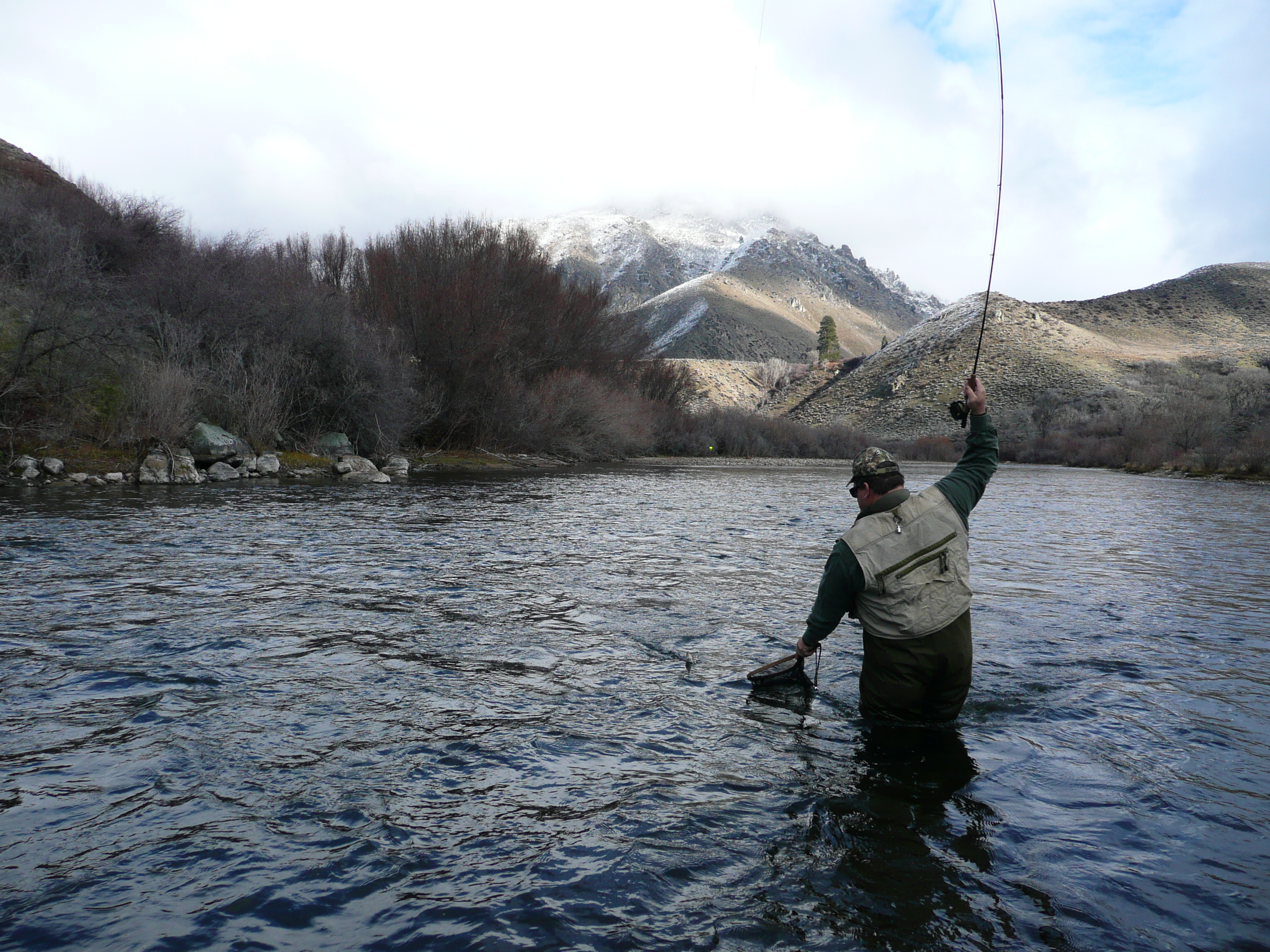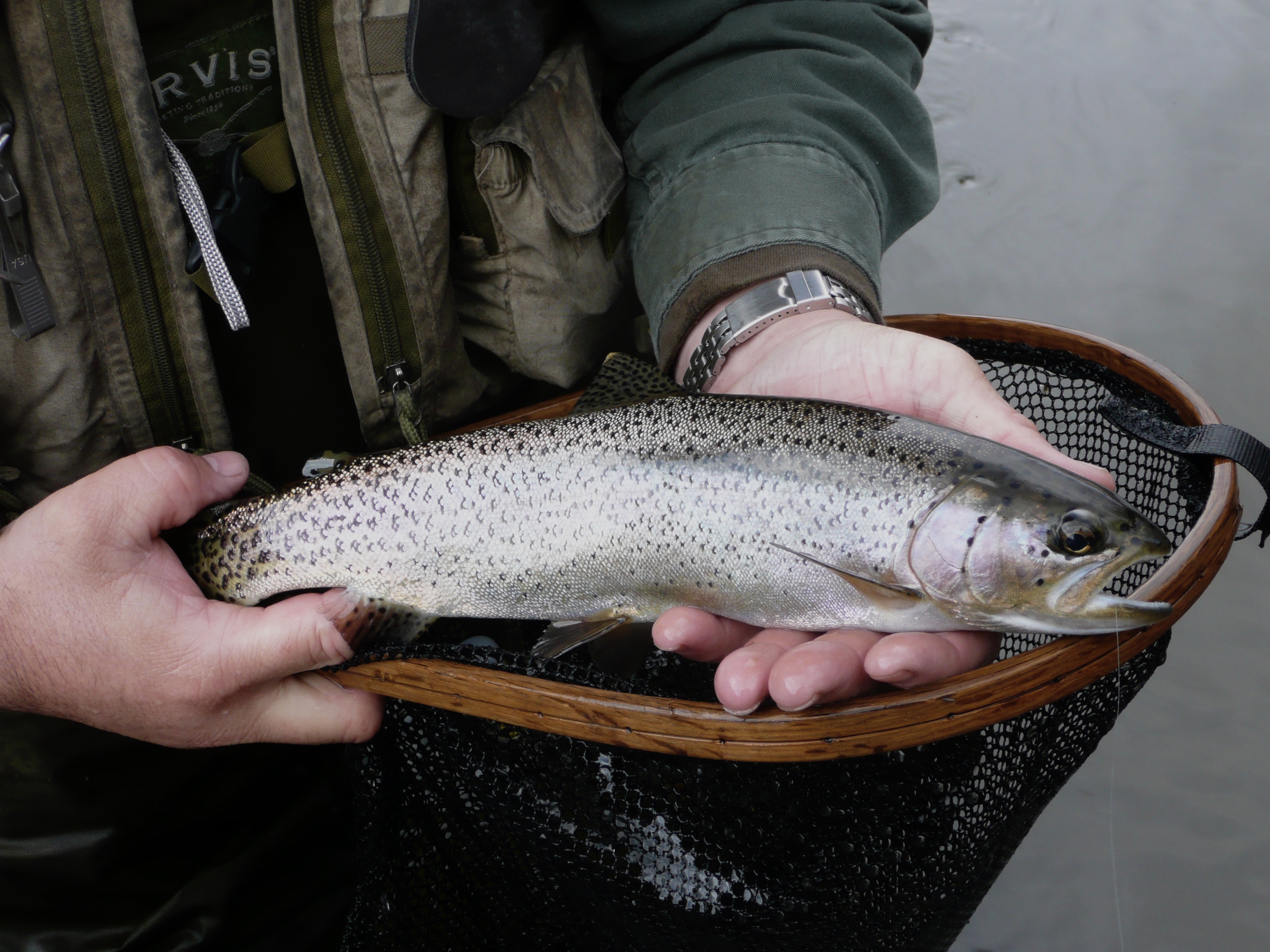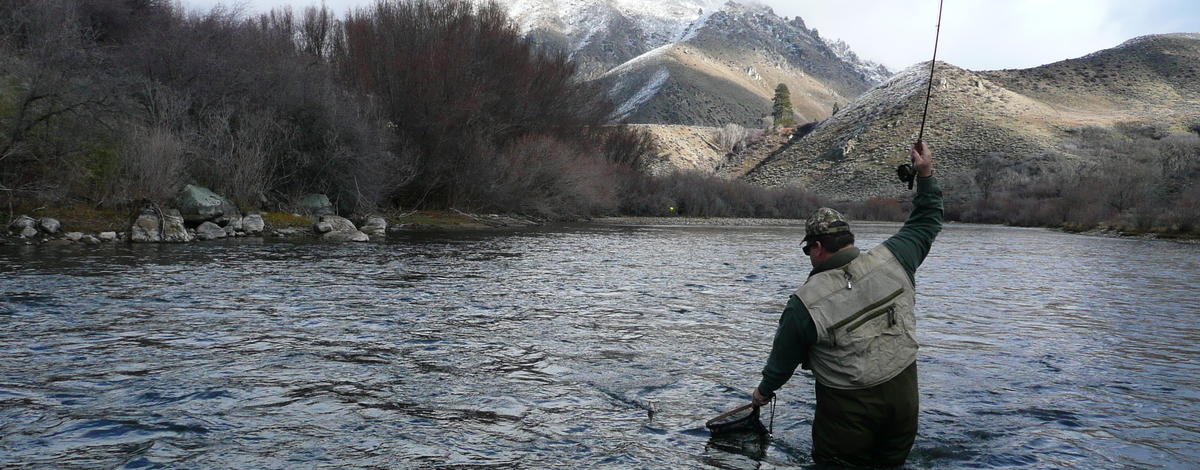People may see anglers wading streams during frigid weather and wonder "what are they doing?" The short answer is, probably catching fish.

Late fall and winter are often overlooked on Idaho's rivers and streams for the simple reason many people don't want to deal with the cold, but trout and whitefish remain fairly active during cold temperatures, and there's no reason you can't catch them.
In fact, late-season fishing has its advantage. Many streams are at their lowest levels of the year, which concentrates fish in smaller areas. Most rivers and streams are also nearly empty of anglers, so you get your pick of prime fishing spots.
Find the right river or stream
Spring-fed rivers and streams, and those fed by dam releases often fish well during winter months because temperatures tend to be slightly warmer and more stable.

Rainbow trout are a favorite winter quarry, and where you find them, you will often find whitefish, which are also fun to catch. (Read more about catching whitefish.)
You will find trout and whitefish in similar places you find them other times of year, but in late season, they often favor deeper, slower water, although you can still catch them in riffles as well.
Also remember that while fish remain active during winter, they're still a cold-blooded animal, and they may be a little sluggish.They're unlikely to chase food, but they will take it, or a good imitation of it, when it's placed in front of them.
Whitefish school up in the fall and typically spawn in November, so where you catch one, you're likely to find more.
Tweak your techniques
Winter fishing doesn't really require any special tactics, just remember the basics of stream fishing, such as figuring out where the fish are and what they're likely to be feeding on, and adjust for the conditions.
Drifting bait or fly fishing with nymphs are often your best tactics.If you see dimples on the water, it may be fish feeding to eat insects, which will like be tiny midges or mayflies, and trout will also rise to the surface to take a dry fly.
Try different sections of the river and try to figure out where fish are holding and feeding. After you catch a fish, seek out similar water, but remember, fish may move around during the day. But where you find them one day during winter, they're likely to remain nearby, so keep those places in mind when you return.
Fly anglers should not overlook streamers. They can look like a big, easy meal when presented slowly, but don't expect trout to vigorously chase them like during summer. Even dead drifting a streamer can be effective.
Repeatedly cover likely looking water before moving on. You may be surprised that you can catch multiple fish in a fairly small area, so cast and drift (or slowly retrieve) your bait or fly numerous times before moving to the next spot.
Here are some places to check out around the state. See Fish and Game's Fishing Planner to learn more about each location.
Boise River: Don't overlook this river during late season because low winter flows actually make it more accessible and wader-friendly than during summer. It has healthy populations of rainbow trout, whitefish and brown trout. But don't expect gullible fish because they experience a lot of fishing pressure.
South Fork of the Boise River: This popular stretch below Anderson Ranch Dam doesn't get any less popular during winter. Water coming out of the reservoir provides stable conditions and thousands of trout per mile make it a destination for late season anglers. Trout and whitefish tend to be above-average in size.
Big Wood River: This river has long been popular during winter for catch-and-release trout fishing. It rarely freezes, and if you fish it on the right day, you can catch trout on dry flies. Bring your midge and baetis patterns.
Malad River: This spring-fed stream is a fun winter fishing spot because it's easily accessible from the Hagerman area and has lots of trout. Bring your light tackle because they tend to run small, but they're plentiful and fiesty.
Lower Lochsa, and Selway rivers: All provide good opportunities to catch whitefish during winter, and also have catch-and-release trout fishing.
St. Joe River: This river provides winter fishing opportunities for cutthroat trout and whitefish.
North Fork of the Coeur d'Alene River: Lower section also has fishing for whitefish and cutthroat trout and is accessible during winter.
Snake River below American Falls: This section of the Snake has produced some excellent trophy trout fishing in recent years, and there are plenty of others. The relatively mild climate and dam release keeps this fishing accessible and productive during winter.
Snake River (Tilden to Shelley): This section is slated to get nearly 40,000 rainbow trout stocked in November. Several thousand fish will be released near Tilden, Blackfoot, Firth and Shelley.
Portneuf River: Upper section is your best bet, and Fish and Game provides several access areas so you can get to the river.
South Fork of the Snake River: This has year-round trout fishing and there's no limit on rainbow trout. There's also lots of opportunity to catch whitefish during winter.
Here are late-season fishing tips:
- Sleep in: There's rarely a need to be there at first light. You will usually have better fishing late morning to early afternoon when the water warms a few degrees.
- Stay close to home: Winter is a good time to explore your local trout fisheries, or rediscover them.
- Plan short trips: There's no getting around the effects of cold weather, and eventually it will take its toll. Plan to fish for an hour or two and call it good. If you can last longer, consider it a bonus.
- Bring hand warmers: Your hands are most likely to get wet, and they can easily get chilled. A hand warmer will quickly rewarm them. An extra pair of gloves is also a good idea because one pair usually gets wet.
- Think about traction: Rocks are slippery when wet, and more slippery when icy. Wading boots with cleats are a good option. It's also good to have a set of dry clothes in your vehicle in case you take an unexpected plunge.
- Keep your feet warm: Probably goes without saying, but you may be wading in water that's barely above freezing, so wear thick socks or two pairs. If your feet get cold, you will be uncomfortable.
- See it as adventure: Things will look and feel different, but the trip will be rewarding if you appreciate those differences. Catching a few fish never hurts, either.
- Check the regulations: Some rivers and streams have different rules for winter, such as catch-and-release fishing only, restrictions on bait, or they may be closed to fishing. See details in the 2019-21 fishing seasons and rules booklet.

